Can Forest City be country's economic lifeboat?
Lim Teck Ghee, Murray Hunter & Carolyn Khor
By Lim Teck Ghee, Murray Hunter & Carolyn Khor
As the nation battles insufficient tax revenue, growing government debt, and the inability of government-linked companies (GLCs) to catalyse the economy, young Malaysians are increasingly unable to find rewarding employment and losing hope that their future in Malaysia will be promising and secure.
The writing was on the wall from a long time ago with worker migration to Singapore and elsewhere increasing since the launch of the New Economic Policy.
According to former human resources minister V Sivakumar, some 1.13 million out of 1.86 million Malaysians who migrated overseas resided in Singapore.
Two studies conducted in 2022 found that 39 percent of the diaspora working in Singapore are skilled workers and 35 percent are semi-skilled, while in Brunei, 68 percent of the working diaspora are skilled workers and 24.1 percent are semi-skilled.
Our national brain-drain rate of 5.5 percent of the population officially revealed recently compares badly with the 3.3 percent for the world. It may be an underestimate and may also conceal the disconcerting fact that a disproportionate number consists of some of our brightest talents and entrepreneurs.
Stemming outmigration and providing a sustainable and game-changing stimulus to the economy is among the biggest, if not the biggest challenge for the nation.
Background
Can Forest City and the South Johor Special Economic Zone emulate the Shenzhen model which propelled the earlier sleepy Pearl River delta region into a powerhouse of global economic development?
ADS
Forest City in Iskandar Puteri, Johor was initially planned as an integrated residential development. Commenced in 2006 by a consortium of mainland Chinese real estate developers, this was touted as an adjunct to the Belt and Road Initiative (BRI).
Its developer, Country Garden Pacificview Sdn Bhd, is a joint venture between Country Garden Group and Esplanade Danga 88 Sdn Bhd (EDSB), a Malaysian government-backed company. Country Garden, a company on the Hong Kong Stock Exchange’s main board, is listed among the Fortune Global 500 and is one of the top three developers in China.
The grand vision of the project was to create a luxury township enclave for well-to-do citizens from China. It was envisioned that the township would attract Chinese wealth and investment and build a new modern city, built on four man-made islands on the Straits of Johor adjacent to Singapore.
The first island was planned as the high-tech industrial zone, followed by the second one, as the central business district and tourism zone. The third island was supposed to be the financial and economic districts, while the fourth island was intended as a conference and forum zone. The entire development was supposed to be completed by 2035.
However, the project was hit in 2018 by then-prime minister Dr Mahathir Mohamad, who declared foreigners would not be granted visas to live in Forest City. Further, currency controls introduced by President Xi Jinping in 2019 drastically restricted potential customers and the onslaught of the Covid-19 pandemic dealt a body blow to the project.
Today, the Forest City project, dubbed the “city in the sea”, is a ghost town and a lost opportunity for the Johor and national economy. Forest City’s potential as a city to take the overflow from Singapore, similar to what Shenzhen did for Hong Kong, remains unfulfilled.
What will it take to revitalise Forest City so it can live up to its promise as a game changer in the national economy?
A reconfiguration and revision for Forest City requires the setting up of parameters to revitalise the project. The challenges ahead can be very clearly seen in the Swot analysis below:
ADS
Strengths
● Location, location, location: The primary strength of Forest City is its strategic location close to Singapore, easily accessible by land and water. Located near Johor’s second link into Singapore on the Jurong industrial side, it can be the gateway connecting Singapore and Malaysia in future growth plans.
● It is also located in the heart of Asean, currently the world’s seventh-largest economic bloc. Asean has the world’s third-largest young population after China and India: approximately 61 percent of its total population is under 35 years old.
The region also boasts a growing middle class, with a consumption power projected to grow rapidly. The total nominal GDP of the 10 Asean nations measured in US dollar terms amounted to US$3.6 trillion (RM17.2 trillion) in 2022, a size larger than India in 2022, which had an estimated gross domestic product of US$3.5 trillion.
● Completed infrastructure: Much of the infrastructure and buildings are already onsite in Forest City. Approximately RM20 billion has already been spent. Consequently, the needed physical infrastructure development is in place. What is missing is the human resources development.
● Support from the Malaysian government: This project is fully backed by the Malaysian government.
● Support from the Johor ruler: The sultan of Johor has on many occasions voiced support for the Forest City project.
Weaknesses
● Reputational damage. Forest City is presently viewed as a failure with some media describing it as a ghost town. According to reports, Forest City is only one percent occupied. The Covid-19 pandemic and movement control orders wrecked any positive momentum the project was able to attract.
● Severe blockages at the customs and immigration checkpoints across both Johor Bahru and Singapore have led to a non-starter for efficient business trips and regular commuting between Forest City and Singapore. This has been an issue for 20 years now and constitutes perhaps the single biggest obstacle to larger investment flows into Forest City.
Opportunities
● The major opportunity for Forest City can come about if it moves away from its initial residential property market orientation to becoming a hub of hi-tech and value-added manufacturing industries looking to expand out of Singapore and Penang or new investment flows that are attracted by the cheaper labour, land, and other lower establishment costs in Johor.
● If this can take place, it can attract the ancillary service businesses that can ensure the sustainable growth of Forest City. When this development attains critical mass (the incubation period for Shenzhen’s development stretched over 15 years), considerable multiplier effects will come to Forest City and the surrounding areas. This could make Forest City the go-to place to take up overflowing growth from Singapore where land is severely limited and expensive; and where the importation of labour is increasingly out of favour with the local electorate.
● If the high-speed railway between Kuala Lumpur and Singapore is built, this will add impetus to the future growth of Forest City as it would become easily accessible from Kuala Lumpur and Singapore.
Threats
● Strong competition from neighbouring countries: In terms of foreign direct investment inflow, Malaysia ranks fourth in Asean at US$17.1 billion, after Singapore (US$141.2 billion), Indonesia (US$22 billion) and Vietnam (US$17.9 billion). Many global companies are headquartered in Singapore, Hong Kong, and other up-and-coming Asian cities and countries that are seen as having superior investment potential than Malaysia.
● Rivalry with Penang: In 2023, Penang ranked first in Malaysia for its investment performance, especially in the electric and electronics sector. The comparative advantages that Johor can offer to local and foreign companies are not yet apparent.
● Potential institutional threats may come from future governments that may cease to support the city. This has happened once before with the former prime minister withdrawing long-stay visas for Chinese real estate buyers in Forest City, and changing the criteria for Malaysia My Second Home applicants.
● Economic conditions and changes in capital outflow rules in Singapore and China, the two nations whose participation in Forest City’s present and future development is essential.
● Bureaucratic foot-dragging and corruption compounded by political instability.
How can Forest City become Malaysia’s economic lifeboat?
Forest City’s original mission must be scrubbed and substituted with a new one. The new mission should encompass building the area into one of the nation’s major innovative growth areas. This should be inclusive of both micro, small, and medium enterprises (MSMEs) as well as large established international corporations.
This requires a dual strategy. The first is straight “high pressure” selling of the location to foreign and local corporations, highlighting the advantages of moving to Forest City.
The second strategy is much more difficult. The key is to develop local home-grown innovation and nurture this until export-oriented MSMEs can grow alongside the corporations in the area.
A new dimension of education, nurturing, and mentoring of MSMEs is needed. Unfortunately, traditional universities are not good at this. Traditional technical and vocational education and training (TVET) colleges are also inadequate.
We hold to the premise that entrepreneurship cannot be taught effectively and can only be learnt and sustained through experience. Once this is recognised, the education system must be re-arranged accordingly.
We propose that Forest City become a massive entrepreneurial incubator, with mentors available to nurture innovation-based MSMEs. TVET institutions must teach the principles of start-ups and the technologies these new enterprises will require.
In this way, Forest City would be one big start-up.
The key is pushing Forest City up to a critical mass where new businesses will add synergies to the old and create community multiplier effects, thus incubating a bustling community economy that will flow over to services, entertainment, tourism, finance, and construction.
Apart from Shenzhen, Penang and Rayong in Thailand are good examples that can be studied, and the lessons applied to Forest City.
If Forest City can create its own “champions”, this will attract and inspire others to succeed. Thus, instead of Forest City being an enclave of well-to-do Chinese from China, it could become a truly Malaysian entrepreneurial and innovative city which may well become the nation’s economic lifeboat alongside Penang.
Our immediate priority proposal
If a quick QR code or RFID-enabled travel pass can be set up for easy daily usage by car, rail, or water taxi across the causeway, it will open huge opportunities for Forest City and Johor to benefit from the Singaporean and expatriate communities.
Originally published in Malaysiakini 21st April 2024
LIM TECK GHEE is a former senior official with the United Nations and World Bank.
MURRAY HUNTER is an independent researcher and former professor at the Prince of Songkla University and Universiti Perlis.
CAROLYN KHOR is a former ministerial press secretary, a former United Nations Volunteer and an independent researcher/writer.
Subscribe Below:



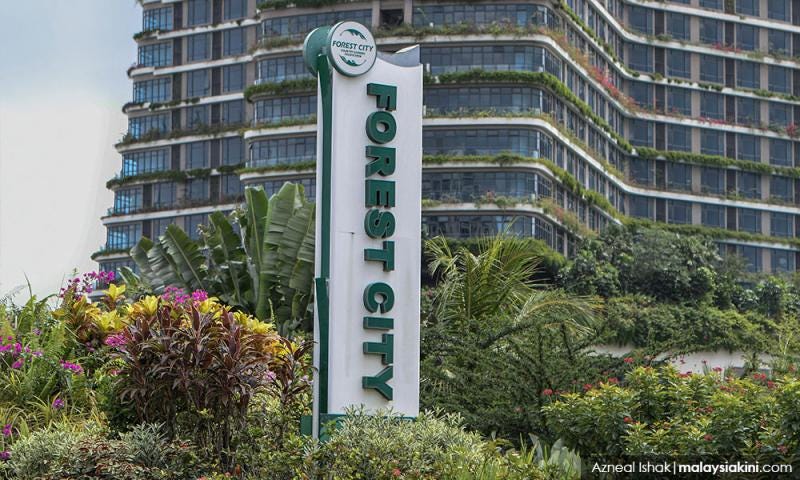
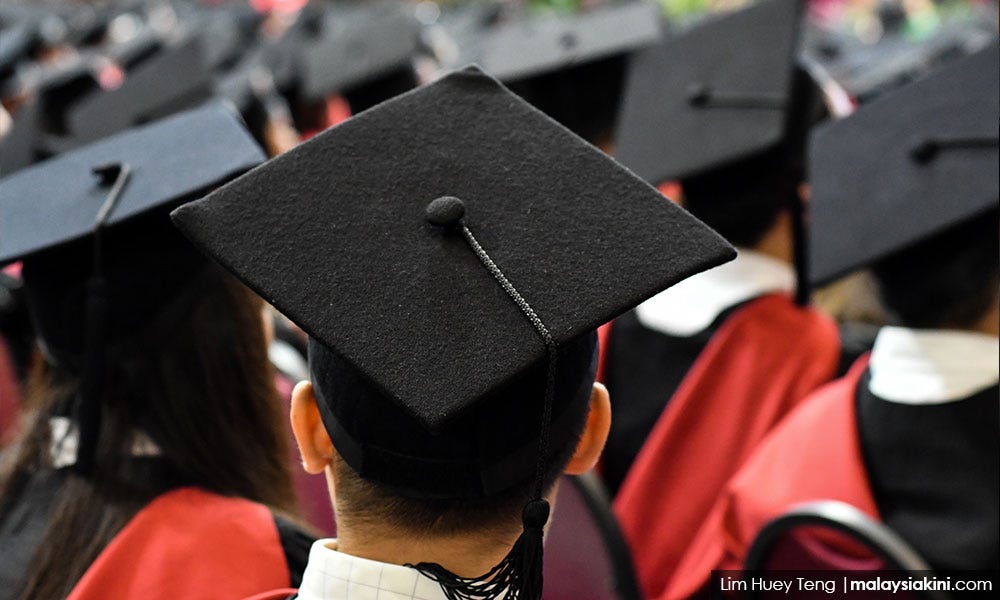
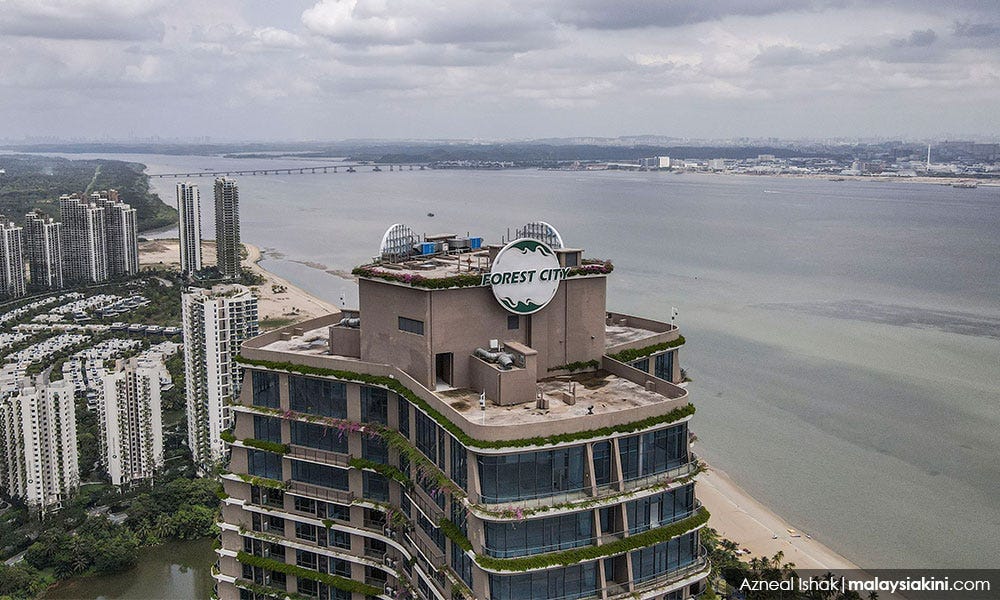
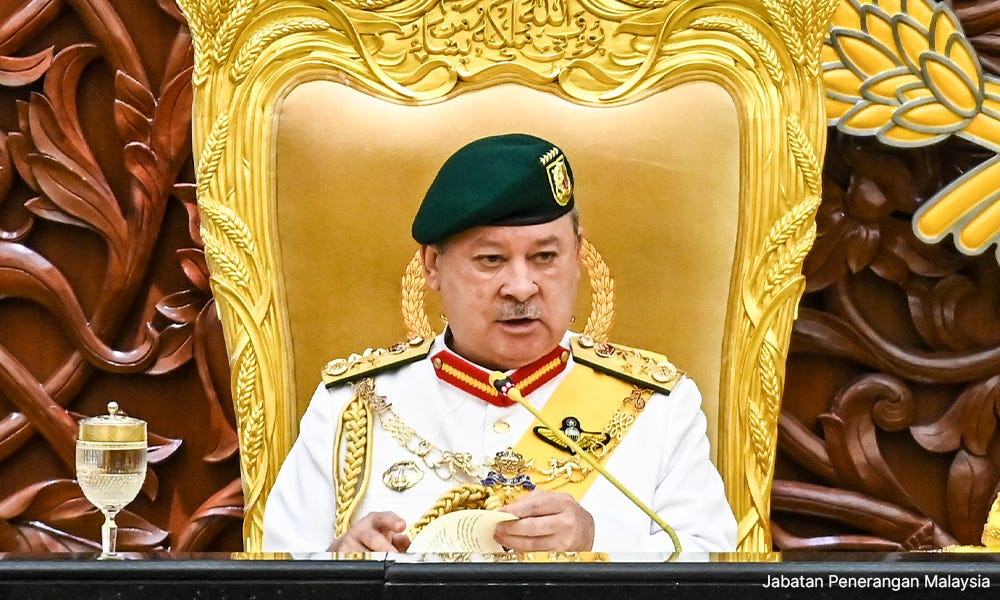

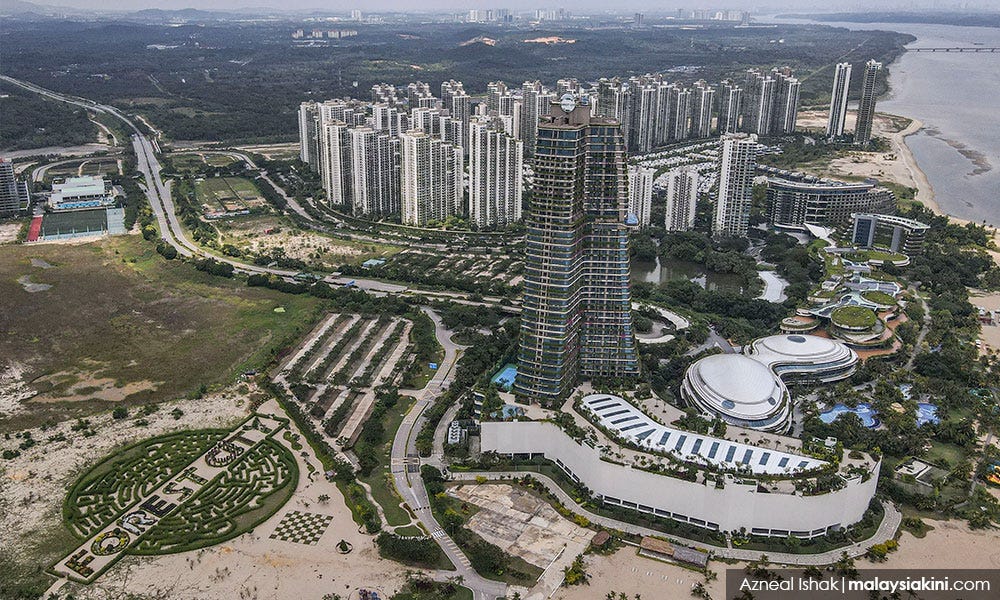
Forest City would work like magic if it doesn't get wrecked by the macaivillain Kerala Krait Mamakthir. Giving him a cut at the start of the venture would have helped. Like giving him a cut of the East Coast rail venture. Mamakthir's buddy Toon Dying could have been the "Cabal of Elders' " middleman for the Snake Pharaoh M for Memali Massacre Monster.
Because he was not part of the scheme, Mamakthir's anger and bitterness over being cut out meant he would take his revenge soon as the DAP helped him into power as Malaysia's return from the dead zombie PM. Soon as that happened, Mamakthir rushed off to China to cut alternative revised deals and to lecture on "debt traps" . The Chinese wouldn't have that, told Mamakthir to fcuk off. Together with the unceremonious send-off, the Chinese stopped buying our palm oil, birds' nests and durians. We were saved by drinking palm oil ourselves five times a day, but Mamakthir's macaivillain antics won us the entire right to pay the massive cancellation penalties for the projects with the Chinese. For Mamakthir's brilliance, Malaysia got properly ass-fcuked.
There's another way to deal with Forest City - leave the Chinese alone and let them run the whole show. As the project can be lovely money-laundering, capital flight schemes, only the financial-savvy Chinese should be involved, they are the ones with such needs. And the ones with the money - and the expertise to operate such complex matters. Singapore is doing pretty well with Chinese (and Indon, Burma, etc) funny money falling outa sky.
For the run-on-the-mill stuff for Forest City which still requires more than basic skills in management, we can lure back our labour export to Singapore by threatening to cancel their nationality. Since Singapore will not want to give nationality to Malaysians, the only way out is to slave in Malaysia.
Mamakthir and Toon Dying would be too busy fighting for their children's legal defence (for corruption, like usual...) and even for the dads themselves, to screw anything out of Forest City, so Forest City would be a win-win for the Chinese, Alhamdullilah!
Forest city can be part of wealth creation for the country. It needs leadership that is focussed. Key here is sales. A proper due d will show that it needa rgt1bil upgrading that will result in rgt5bil sales. This will intend generate economic activities of rgt10bil a year. The sjez will soon fire up the area and more restaurants,coffee bars,alfresco dining area. Need guys like liew kee sin to make it work.
Sell some of the hydrocarbon reserves at a discount. That can bring addition us10b and can be used to pay off some debts.
Grow the smes to 50% of gdp.this will bring additional cash to the country via taxes.
Go talk to ong kian meng and ask him to make gst a viable option.he says it doesnt at the moment